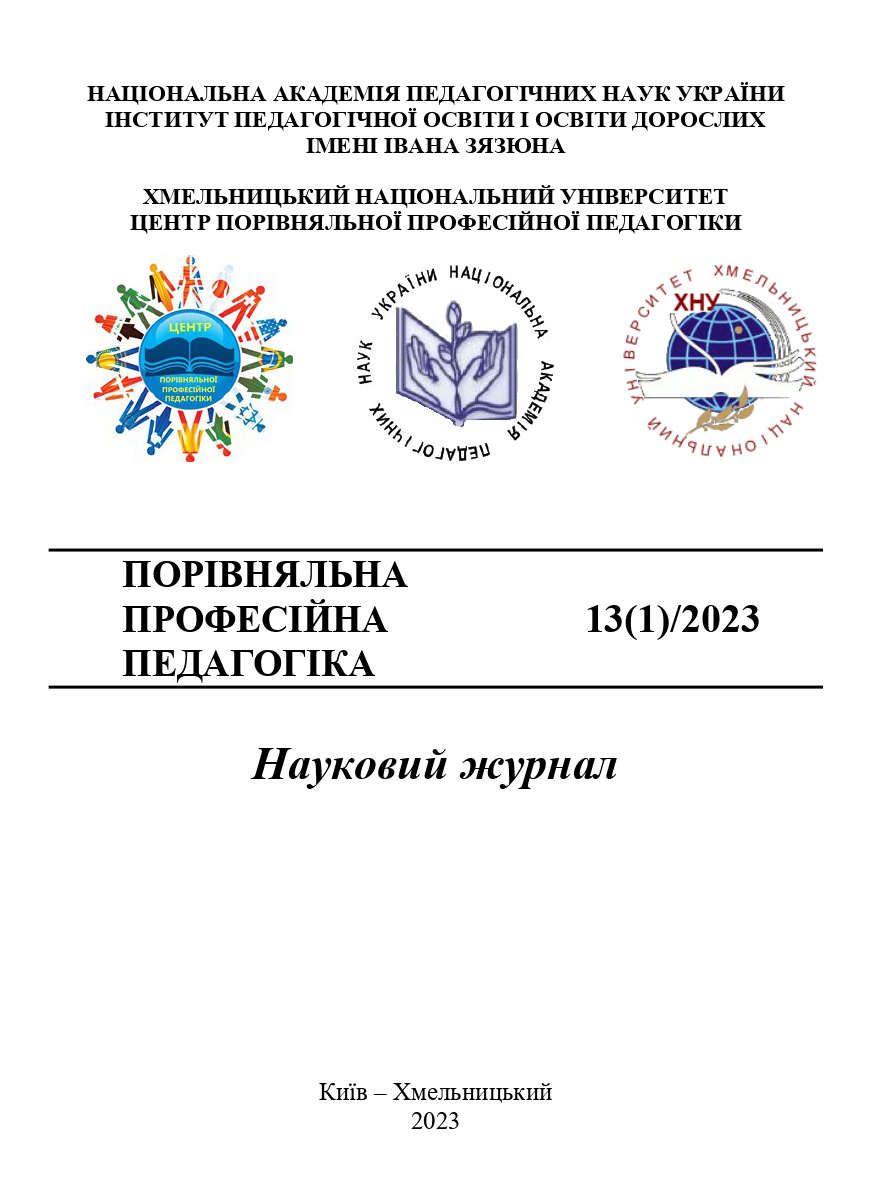PROBLEMS OF TEACHING CHOREOGRAPHY IN AMERICAN SCHOOLS
DOI:
https://doi.org/10.31891/2308-4081/2023-13(1)-7Keywords:
USA, choreography education, school education, teacher-choreographer, professional training, teaching choreography, dance art, content of educationAbstract
The article is devoted to the study of problems related to teaching choreography in American schools. It is found that the long-term study of choreography in public and private schools played a secondary role or was positioned mainly as an extracurricular activity (within the scope of Art or Physical Education syllabi). It is noted that there is a certain inconsistency in the choreography education of American schoolchildren, which is caused by the low professional qualifications of teachers and their insufficient readiness to teach choreography at school. The directions of the educational policy of the American government regarding the improvement of school education standards, the content of curricula and educational programs, as well as the quality of choreography teacher training are analyzed. The content of school syllabi is studied and summarized in terms of highlighting the art of choreography as the main subject. It is established that a serious problem of teaching choreography in schools is the inconsistency of the content of syllabi and the unclear definition of the criteria for assessing the learning outcomes. It is found that American teachers take into account the fact that the introduction of dance choreography in schools contributes to the development of students' creative thinking, leadership qualities, psychological comfort and health care. It is defined that issues regarding the development of higher education standards, certification of choreography teachers in each state, substantiation of requirements for obtaining a license, unification and standardization of terminology, legislation, improvement of state educational policy, as well as funding conditions, etc., remain debatable. It is concluded that choreographic education all over the world faces common problems: "Who should teach?", "Who should teach teachers and what should they teach?". The role of the modern choreography teacher is not only to teach dance steps, but rather to consciously manage the capabilities of the student with the help of dance teaching skills.
References
Becker, K. M. (2013). Dancing through the school day: How dance catapults learning in elementary education. Journal of Physical Education, Recreation & Dance, 84(3), 6-8. https://doi.org/10.1080/07303084.2013.763665
Brown-Aliffi, K. (2022). Dance education in New York City charter schools. Journal of Dance Education, 22(2), 83-97. https://doi.org/10.1080/15290824.2020.1744153
Elpus, K. (2022). Access to arts education in America: The availability of visual art, music, dance, and theater courses in US high schools. Arts Education Policy Review, 123(2), 50–69. https://doi.org/10.1080/10632913.2020.1773365
Englebright, K., & Mahoney, M. R. (2012). Assessment in elementary dance education. Journal of Dance Education, 12(3), 87–92. https://doi.org/10.1080/ 15290824.2012.701176
ESSER Funding Toolkit 2021– COVID Relief Funding in the Dance Classroom (2021). Retrieved from https://www.ndeo.org/Portals/NDEO/ESSER_Funding_Toolkit/ _2021_-_Dance_v1.pdf.
Gilbert, A. G. (2005). Dance education in the 21st century: A global perspective. Journal of Physical Education, Recreation & Dance, 76 (5), 26–35. https://doi.org/10.1080/07303084.2005.10608250
Gradwohl, A. K. (2018). Perceptions of technology in dance education: The effect of technology on student learning and teaching strategies of the twenty-first century skills in dance education [Master’s thesis, University of Northern Colorado]. Scholarship & Creative Works @ Digital UNC
Hanna, J. L. (2008). A nonverbal language for imagining and learning: Dance education in K–12 curriculum. Educational Researcher, 37 (8), 491–506. https://doi.org/10.3102/0013189X08326032
Harding, M. (2012). Assessment in the high school technique class: Creating thinking dancers. Journal of Dance Education, 12(3), 93–98. https://doi.org/10.1080/ 15290824.2012.701172
Leonard, A. E., Hall, A. H., & Herro, D. (2016). Dancing literacy: Expanding children’s and teachers’ literacy repertoires through embodied knowing. Journal of Early Childhood Literacy, 16(3), 338–360. https://doi.org/10.1177/1468798415588985
National Dance Education Organization. (2023). State Information Request. Dance-Certification. Retrieved from (https://www.ndeo.org/Portals/NDEO/Documents/ State-Information-Request-_-Dance-Certification_May%2023%20Update.pdf?ver=meuy/ ZMED0EHLDqV_wCA-6g%3d%3d
Parrish, M. (2016). Toward transformation: Digital tools for online dance pedagogy. Arts Education Policy Review, 117(3), 168–182. https://doi.org/10.1080/ 10632913.2016.1187974
Risner, D., Horning, S., & Henderson Shea, B. (2021). Preparation, policy, and workplace challenges of dance teaching artists in P-12 schools: perspectives from the field. Arts Education Policy Review, 1-14. https://doi.org/10.1080/10632913.2021.2004959
Ross, J. (2012). Moving lessons: Margaret H'Doubler and the beginning of dance in American education. University of Wisconsin Press.
Silk, Y., Mahan, S., & Morrison, R. (2015). The State Status Report: A Review of State and Regional Arts Education Studies. Americans for the Arts. https://www.americansforthearts.org/sites/default/files/State_Status_Report_Final.p df


